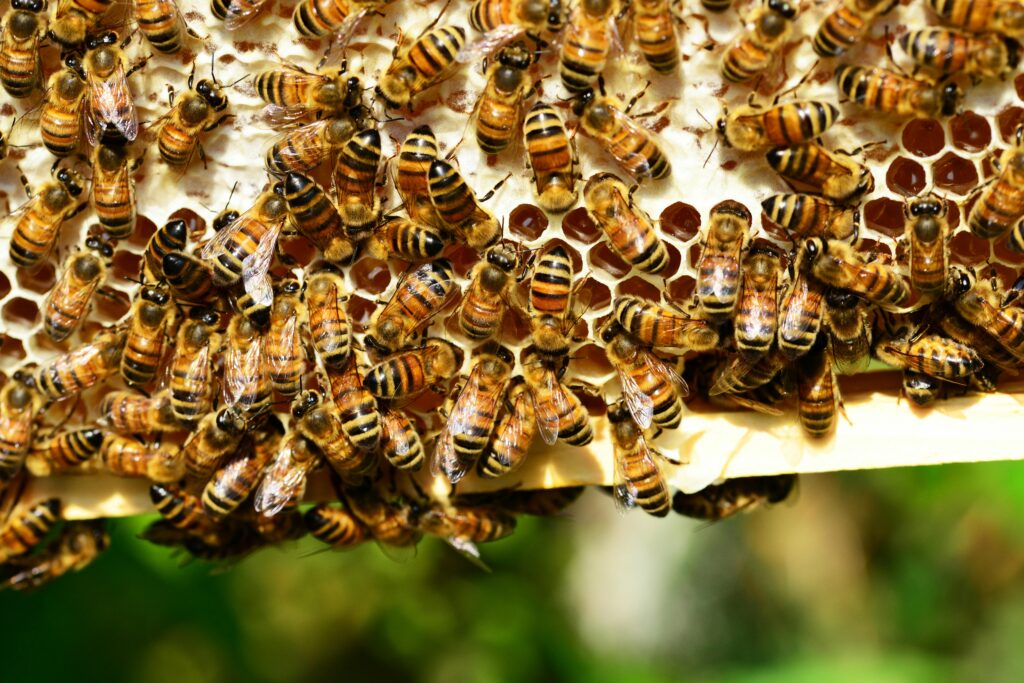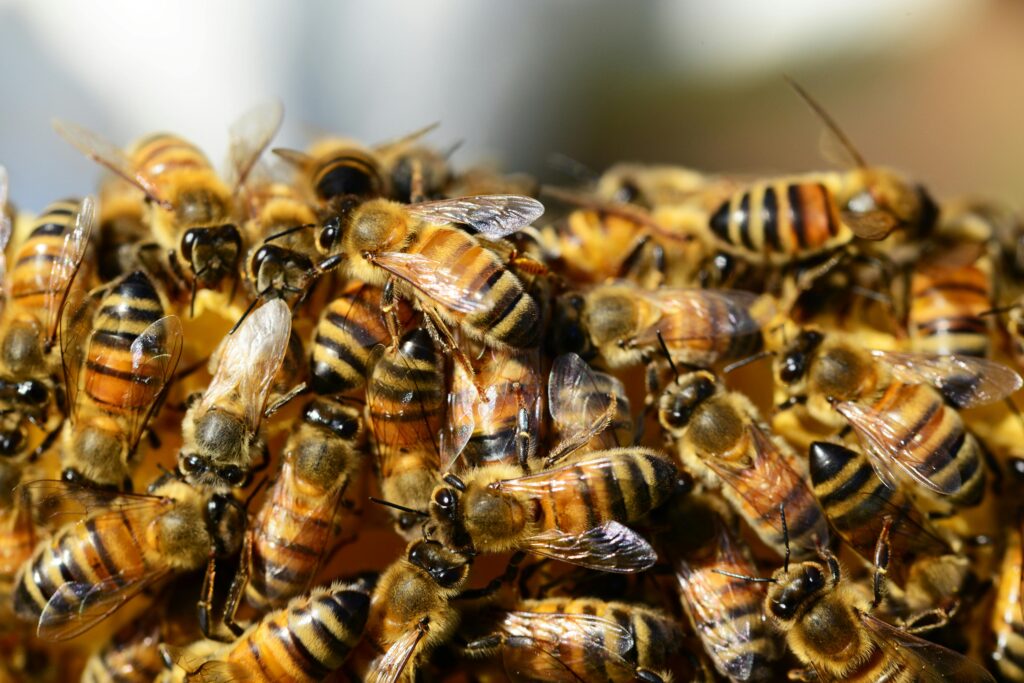Bees are among the most fascinating and vital creatures on Earth. These small, industrious insects play a crucial role in the health of ecosystems, agriculture, and the food systems that sustain us. While they are widely known for their ability to produce honey and beeswax, their most important function lies in their role as pollinators. Pollination, a process that enables plants to reproduce, is essential for the growth of many of the foods we eat, as well as the plants and flowers that sustain wildlife. With more than 20,000 species of bees worldwide, from the familiar honeybee to the elusive bumblebee, these pollinators are integral to biodiversity and the very foundation of life on Earth. In this article, we’ll explore the world of bees, examining their behavior, importance, challenges, and the actions we can take to protect them.
1. Why Bees Matter: The Importance of Pollination
At the heart of the conversation about bees is their role as pollinators. Pollination is a natural process in which pollen is transferred between flowers, facilitating fertilization and enabling the production of seeds, fruit, and new plants. Bees are the most efficient and important pollinators of flowering plants, including many of the crops we rely on for food.
Pollination and Agriculture
It’s estimated that one-third of the food we consume depends on pollination, and a large portion of that pollination is carried out by bees. Many of the world’s most important crops—such as apples, almonds, blueberries, avocados, and cucumbers—are reliant on bee pollination. In fact, honeybees alone are responsible for pollinating approximately 75% of flowering plants worldwide, including about 35% of the world’s food crops.
Bees not only help in the pollination of fruits and vegetables, but also many of the crops used for livestock feed, like clover, alfalfa, and various grains. Without bees, the yield of these crops would be significantly reduced, leading to food shortages and economic instability in the agricultural sector.
Biodiversity and Ecosystems
Bees also play a critical role in maintaining biodiversity. By pollinating wild plants, they support a vast network of animals and other insects. Many species of birds, mammals, and insects depend on the fruits, seeds, and leaves produced by these plants for food. In turn, plants rely on bees to reproduce and maintain genetic diversity.
Wildflowers, trees, shrubs, and even some plants in the rainforest are all dependent on bee pollination for their survival. This means that bees not only sustain human life but are also integral to the health of natural ecosystems.
Economic Impact
The economic value of bee pollination is immense. According to the United Nations, bee-pollinated crops account for over $150 billion in global agricultural production each year. In the United States, it is estimated that honeybees contribute more than $15 billion annually to crop production alone. This includes vital crops such as apples, almonds, blueberries, and pumpkins, but also extends to plants that bees help fertilize, which in turn support wildlife and biodiversity.
2. Types of Bees and Their Behavior
There are more than 20,000 species of bees, each with unique characteristics and behaviors. While honeybees and bumblebees are the most well-known, many other species of solitary bees are just as crucial to pollination and ecosystem health.
Honeybees (Apis mellifera)
The most well-known bee species is the honeybee. These highly social insects live in large colonies with a complex social structure. A single colony can consist of tens of thousands of individuals, with a queen, workers, and drones, all performing different roles.
- Honey Production: Honeybees are famous for producing honey, a byproduct of their nectar collection. They use the nectar they collect to make honey, which they store in hexagonal beeswax cells in their hive as a food source for the colony during the winter months.
- Pollination: Honeybees are some of the most efficient and effective pollinators, traveling long distances from flower to flower, collecting nectar and pollen. In doing so, they facilitate the pollination of crops and wild plants alike. Honeybees are especially important for agricultural pollination, as their large colonies make them easier to manage for commercial pollination services.

Bumblebees (Bombus spp.)
Bumblebees are larger, fuzzier cousins of the honeybee, and they are equally important as pollinators. Unlike honeybees, which can only pollinate certain flowers, bumblebees are capable of buzz pollination—a technique that involves vibrating their bodies to shake pollen loose from flowers that have deeper structures or tougher petals.
- Buzz Pollination: Bumblebees are particularly efficient at pollinating crops like tomatoes, blueberries, and peppers. The vibration of their bodies helps release pollen from flowers that might be inaccessible to other pollinators.
- Colony Size: Bumblebee colonies are smaller than those of honeybees, usually containing only a few hundred individuals. However, they are still vital for pollination in many ecosystems, especially in colder climates where they can thrive.

Solitary Bees
Unlike honeybees and bumblebees, which are social and live in colonies, solitary bees live alone and do not form large hives. These include species like mason bees, leafcutter bees, and carpenter bees. While these species don’t produce honey, they are exceptional pollinators and are important for wild plants and crops alike.
- Mason Bees: Known for their ability to nest in holes and crevices in wood, mason bees are particularly effective at pollinating fruit trees like apples and cherries. They are highly efficient and often out-pollinate honeybees for certain crops.
- Leafcutter Bees: These bees are named for their behavior of cutting leaves and using them to line their nests. They are excellent pollinators of flowers and crops such as clover, beans, and tomatoes.
- Carpenter Bees: While they are often mistaken for bumblebees due to their similar appearance, carpenter bees are solitary. They are essential for pollinating many wildflowers and crops. Carpenter bees are also responsible for burrowing into wood to build their nests, which can sometimes lead to damage to structures.

Other Bee Species
In addition to the more commonly known species, there are many other types of bees that play a role in pollination. These include orchid bees, which pollinate orchids, and sweat bees, which are attracted to human sweat and help pollinate a variety of flowers.
3. How Bees Communicate: The Waggle Dance
One of the most fascinating aspects of honeybee behavior is their ability to communicate with each other through the waggle dance. When a worker bee finds a good source of nectar or pollen, it returns to the hive and performs a series of movements that convey important information to other bees in the colony.
- The Waggle Dance: This dance consists of a figure-eight movement, with the bee waggling its abdomen to indicate the direction of the flower patch. The angle of the waggle dance relative to the vertical axis of the hive corresponds to the angle of the food source in relation to the sun. The length of the dance indicates the distance to the food source, with longer dances meaning the flowers are farther away.
- Collaboration: The waggle dance is a form of cooperative behavior that helps the colony work together efficiently. Once other bees observe the dance, they will fly out to find the nectar source, often with remarkable precision.
4. The Challenges Bees Face
Despite their vital role in ecosystems and agriculture, bees face numerous challenges that threaten their survival. The decline in bee populations, known as colony collapse disorder (CCD), is a growing concern globally. Some of the key threats facing bees include:
Pesticides
The widespread use of neonicotinoid pesticides has been linked to the decline of bee populations. These chemicals can affect bees’ ability to forage, navigate, and reproduce, weakening entire colonies. The effects of pesticides can be both direct (killing bees immediately) and indirect (damaging their immune systems, making them more susceptible to disease and parasites).
Habitat Loss
Urbanization, deforestation, and large-scale agricultural practices have led to a dramatic loss of habitats for bees. Many bees rely on a variety of plants for food, and when these plants are destroyed or replaced with monoculture crops (which only offer limited resources), bees struggle to find the food they need to survive.
Climate Change
Climate change is another threat to bee populations, as it disrupts the timing of flowering and pollination. Warmer temperatures, erratic weather patterns, and shifts in seasons affect when and where flowers bloom, making it harder for bees to find food at critical times. This is particularly problematic for species like bumblebees, which are more sensitive to temperature fluctuations.
Diseases and Parasites
Bees are susceptible to diseases and parasites, including the Varroa destructor mite, which has decimated honeybee colonies worldwide. These mites attach to bees and weaken them by feeding on their blood, transmitting viruses, and damaging their ability to survive and reproduce.
5. What You Can Do to Help Bees
The good news is that there are several ways individuals, communities, and governments can take action to protect bees and help restore their populations:



